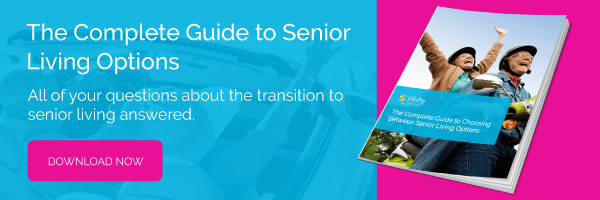The cost of senior living is arguably one of the biggest factors when deciding whether you or a loved one will move. And while average costs are helpful, admittedly- it’s not always easy to decipher the specific expenses that may or may not impact your budget when moving to senior living. But we can help. From the rent to the fees to add-on costs, here’s how to better understand the expenses in senior living.
A Look at Average Costs
It can be helpful to think of senior living as similar to a continuum in which as care needs increase so does the average cost. As such there are typically four types of senior living, each supporting different wants and needs.
- Active Adult Living – A truly independent lifestyle in age-defined communities where residents must be 55 and older. This type of senior living frees you of the stress of home maintenance and yard chores so you can get more out of retirement. Communities are purpose-built for ease of living and the right blend of activities and privacy. A variety of services, amenities, and housing options are also included. Published data on average cost varies, but you can typically expect to spend $3,000 or more a month.
- Independent Living – Ideal for seniors who can still live independently. This type of senior living is focused on convenience and active living with home upkeep, cooking, and cleaning that is taken care of for you in addition to a range of amenities as well as social and enrichment opportunities to enjoy. Published data on the average cost of independent living varies greatly, but you can typically expect it to be between $2,000 to $4,000 a month.
- Assisted Living – This type of senior living helps with daily tasks such as bathing, dressing, and medication management and onsite medical care. These communities also feature a convenient, active, and social lifestyle with home upkeep, cooking, and housekeeping provided in addition to a range of amenities and social and enrichment opportunities to enjoy. The average monthly cost for a private, one-bedroom is $4,500 according to the most recent Genworth Cost of Care Survey.
- Memory Care – Just for those with Alzheimer’s disease and dementia, memory care offers 24-hour support in a secure, nurturing environment with specially trained staff. Residents have the comfort of a structured daily schedule, plus enrichment activities, fitness, and social opportunities to help them thrive. Published data on the average monthly cost for memory care also varies greatly, but you can usually expect a range between $2,000 to $7,000 a month.
Expenses To Expect When Moving to Senior Living
Now that you know the average cost of each type of senior living, let’s take a closer look at what makes up those numbers.
- Base Rent –This is the flat monthly cost for the community, which typically includes rent, utilities, cable, meals, life-enrichment activities, and housekeeping. Some may also include other services like scheduled group transportation; this may also be known as the base fee in some senior living communities
- Upfront Fees – These fees may also be known as entry fees or buy-in fees- in the senior living communities that require them, they are in addition to your base rent. Most communities that charge these fees offer multiple levels of care and consider them a down payment for higher levels of care you may need down the road. But keep in mind this one-time cost can run into the six figures. On the other hand, some communities offer a pricing model that does not require a buy-in, so to speak. However, they may still have upfront fees such as a security deposit or first and last month’s rent.
- Add-On Costs – Depending on your wants and needs, you may incur additional expenses such as personal care or private transportation to and from doctor’s appointments. Other expenses you may choose could include outings, beauty/barbershop charges, concierge services, and pet fees.
It’s also important to note that there are solutions to help you stretch your budget further when moving to senior living. One often-overlooked option is the Veterans Aid & Attendance benefit for qualified wartime veterans or their surviving spouses. You might also consider long-term care insurance, a life insurance conversion, or perhaps a reverse mortgage.
For more information, download our Choosing a Senior Living Community Guide today! Or contact us today to schedule a tour.




